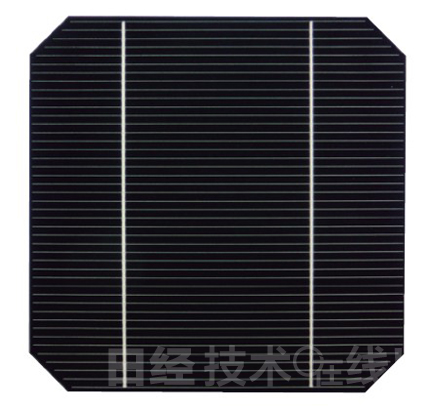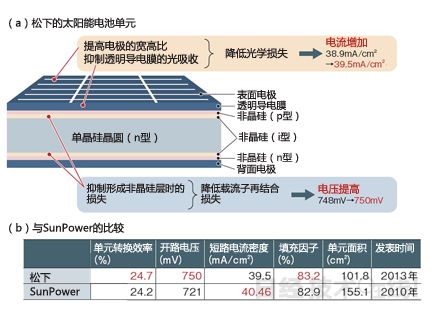Panasonic developed a practical-grade crystalline silicon solar cell with an area of ​​more than 100cm2 and achieved the world's highest cell conversion efficiency of 24.7%, which is 0.5% higher than the US SunPower's 2010 reached 24.2%. The theoretical efficiency of crystalline silicon solar cells is 29%, but in the practical level, 25 to 26% is already the limit. Panasonic stated that "this result has identified more than 25% of problems to overcome" and plans to further challenge the limits.

The "HIT Solar Cell" unit developed this time
Achieving 24.7% conversion efficiency is a “HIT solar cell†made of a heterostructure with amorphous silicon layers formed on both sides of a single crystal silicon wafer (Fig. 1). The amorphous silicon layer can reduce crystal defects on the surface of the silicon wafer and suppress recombination loss, so that it is easy to increase the voltage. However, due to the influence of the amorphous silicon layer, the transparent conductive film, and the surface electrode, some of the sunlight is blocked, so it is difficult to increase the current value.

Figure 1: Reducing losses to achieve unit conversion efficiency of 24.7%
Panasonic has been trying to improve the conversion efficiency of solar cells. In 2011, the cell conversion efficiency of HIT solar cells with a thickness of only 98 μm was 23.7%, and in 2012 it was increased to 23.9%. The company successfully increased the short-circuit current density from 38.9 mA/cm2 in 2012 to 39.5 mA/cm2 by increasing the aspect ratio of the electrodes and suppressing the light absorption of the transparent conductive film. This made a huge contribution to the unit conversion efficiency of 0.8 percentage points increase in one fell swoop.
The back contact structure used by SunPower is easy to increase the current value because there is no electrode on the surface. The short circuit current density of the cell developed by the company in 2010 was 40.46 mA/cm2. Panasonic achieved a current density close to this time, and confidently stated, "This shows that there is room for improvement in the current value."
Although Panasonic surpasses SunPower in terms of its R&D efficiency, it is far behind SunPower in terms of volume. At present, the conversion efficiency of Matsushita's mass production unit is 21.6%, and SunPower has already reached a unit production conversion efficiency of 24.2%. (Reporter: He Jiji, "Nikkei Electronics")
Horizontal Slotted Rubber Seal Strip
Horizontal Slotted Rubber Seal Strip,Rubber Products,Rubber Sealing
EPDM Rubber Seal Strip ,Door&Window Rubber Seals Co.,Ltd , http://www.nsaluminiumwindows.com